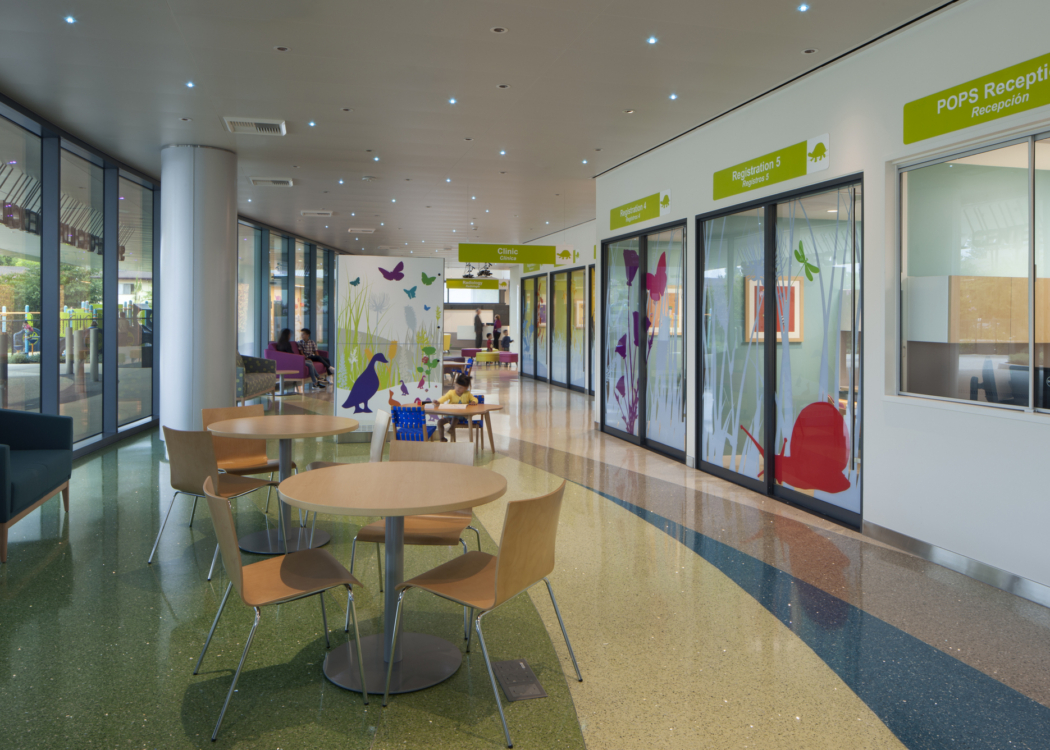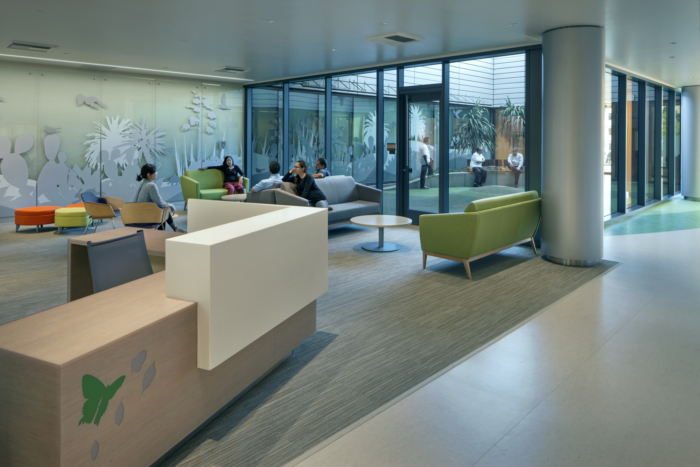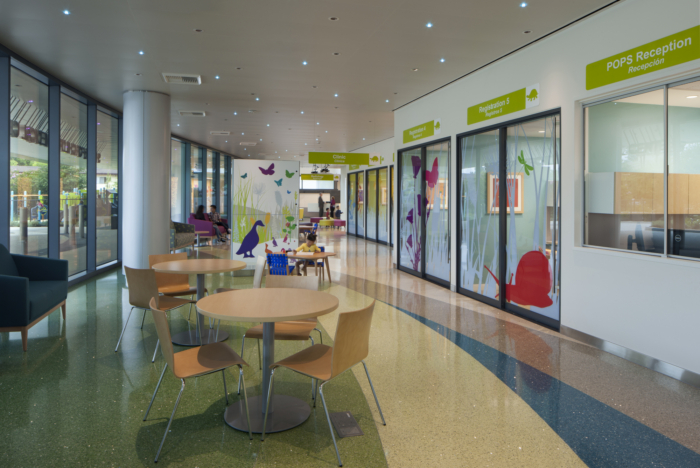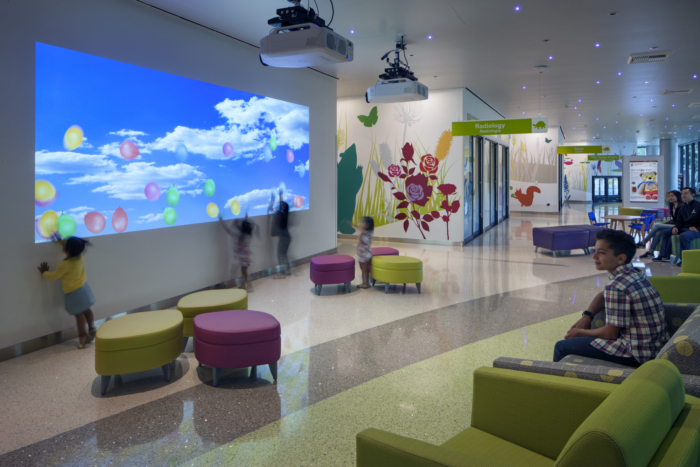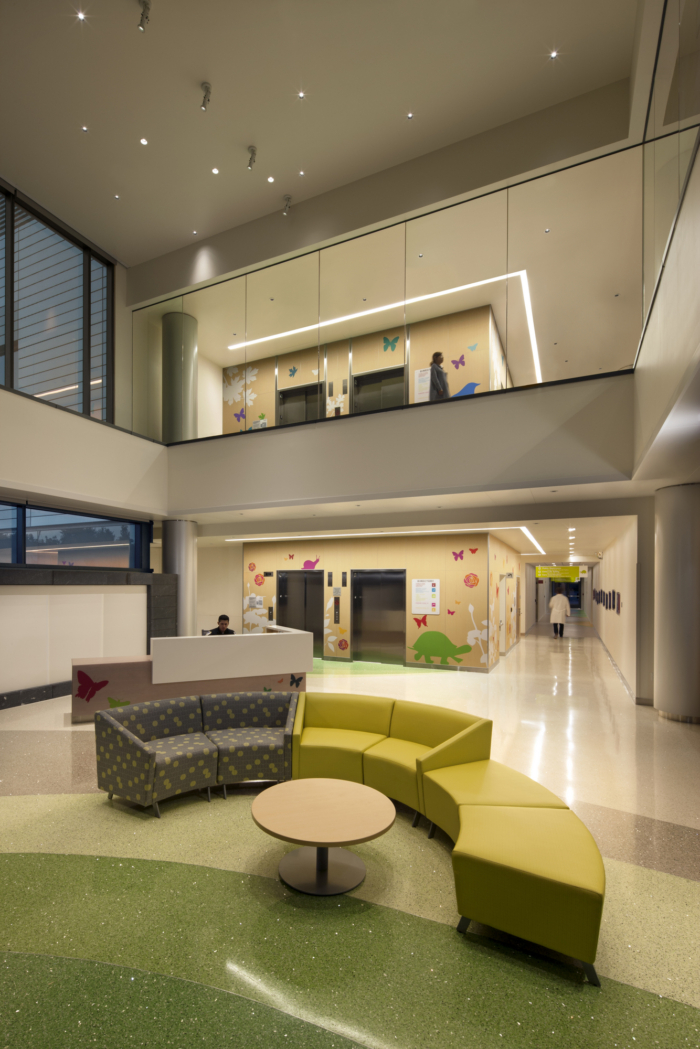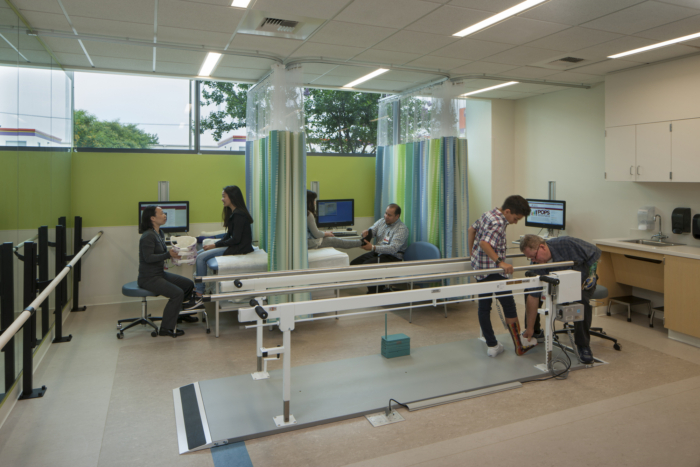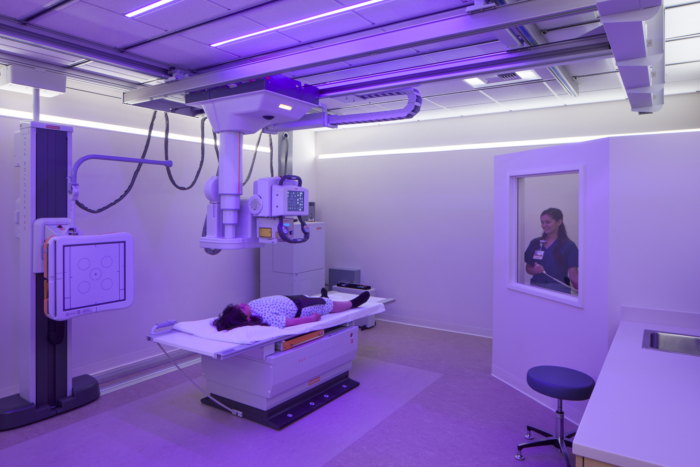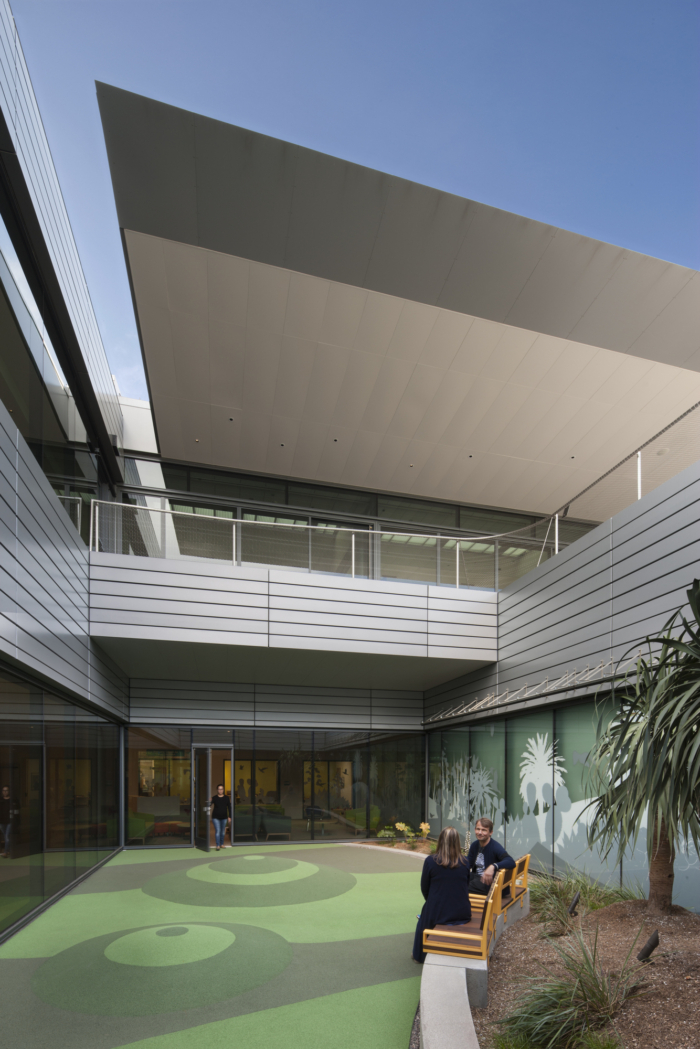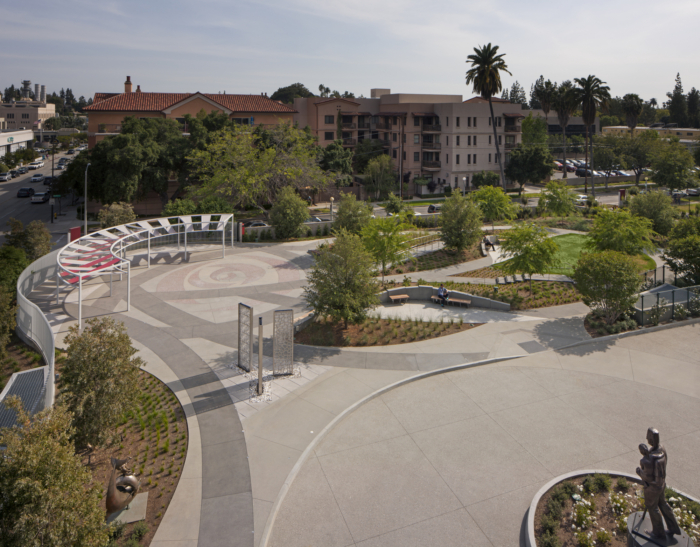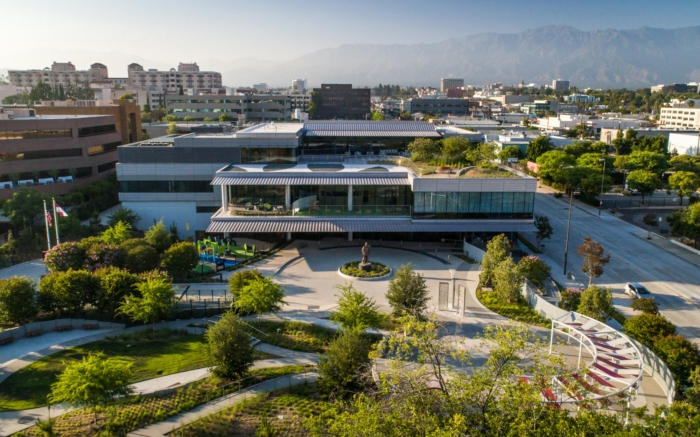Shriners Medical Center for Children
CO Architects and SRG Partnership were engaged by the Shriners Medical Center for Children to design their new outpatient facilities located in Pasadena, California.
The Shriners for Children Medical Center in Pasadena combines a three-story building for surgery, clinical services, rehabilitation, and healing landscapes. As part of a campaign to replace and renovate its aging facilities, Shriners’ new 74,800-square-foot center focuses on outpatient services to better meet its mission of providing care to young patients. The design leverages evidence-based design strategies, the redevelopment of a suburban site, and an outward-facing building design that provides a positive emotional journey for patients and families.
The two-acre site is divided into the medical building on the northern half of the property and therapeutic gardens and outdoor gathering areas on the south side. The contemporary architecture of sweeping horizontal planes, cantilevers, and setbacks, along with region-sensitive landscape, is consistent with the modernist legacy of Pasadena. Local landmarks include designs by architects Greene and Greene, Richard Neutra, and Craig Ellwood, and landscape architects Garrett Eckbo and Lawrence Halprin.
The medical center’s glass-lined walls present an open and inviting character and reveal the activity within the building. A generous garden forecourt and upper-story terraces draw people outside to connect with nature and their surroundings. Three levels of underground parking provide 210 spaces for patient families, visitors, and staff.
CO Architects and SRG created the interiors with a focus on color and shape, while steering clear of childish clichés. Custom-designed murals depicting flora and fauna in colorful silhouettes run along the corridors, inviting discovery on the way to waiting areas and treatment room(which also sport similar graphics), while acting as positive distractions for children under stress. The colorful forest theme starts in the main lobby, which also sports swirls of colored terrazzo flooring. An interactive feature wall draws kids into the space and changes images with kinetic motion ignited by touch. Furnishings are comfortable and colorful in a variety of seating arrangements to accommodate families.
Pre-operative and post-anesthesia care units (PACU) are private, both visually and acoustically, to preserve patient dignity. Patients can control room lighting, entertainment, and education systems, as well as nurse assistance needs, giving them greater autonomy and sense of control. For continued privacy, consultation spaces are provided for confidential conversations.
Daylight is an integral part of the healing and well-being factor. Pre-op and PACU rooms are located on the north side of the second floor with windows for direct access to daylight, while indirect daylight is provided to operating rooms, boosting surgeon and staff awareness and energy. An interior courtyard is located adjacent to the surgery waiting room to provide daylight and outdoor access. Large-scale graphics of trees and plants are subdued in their coloration and wrap the walls in the waiting room and courtyard, providing a seamless exchange between indoors and outdoors.
Architects: CO Architects and SRG Partnership
CO Architects Design Team: Eyal Perchik, Fabian Kremkus, Don Kim, Susan Han, Veronica Carranza
SRG Partnership Design Team: Kent Duffy, Craig Tompkins, Jessica Mistretta, Matt Ottinger
Landscape Architect: Rios Clementi Hale Studios
Contractor: DPR Construction
Photography: Tom Bonner, Nils Timm

